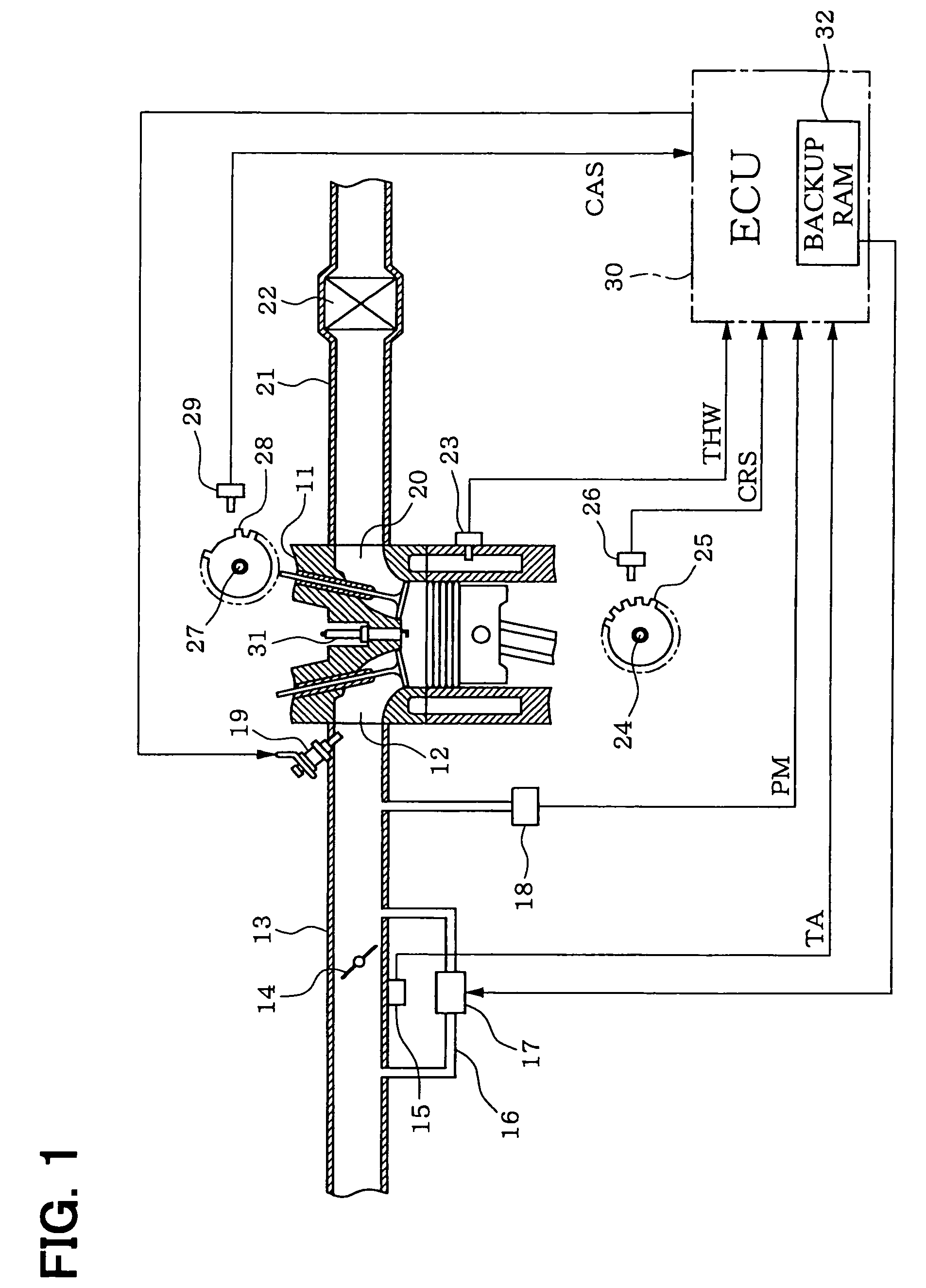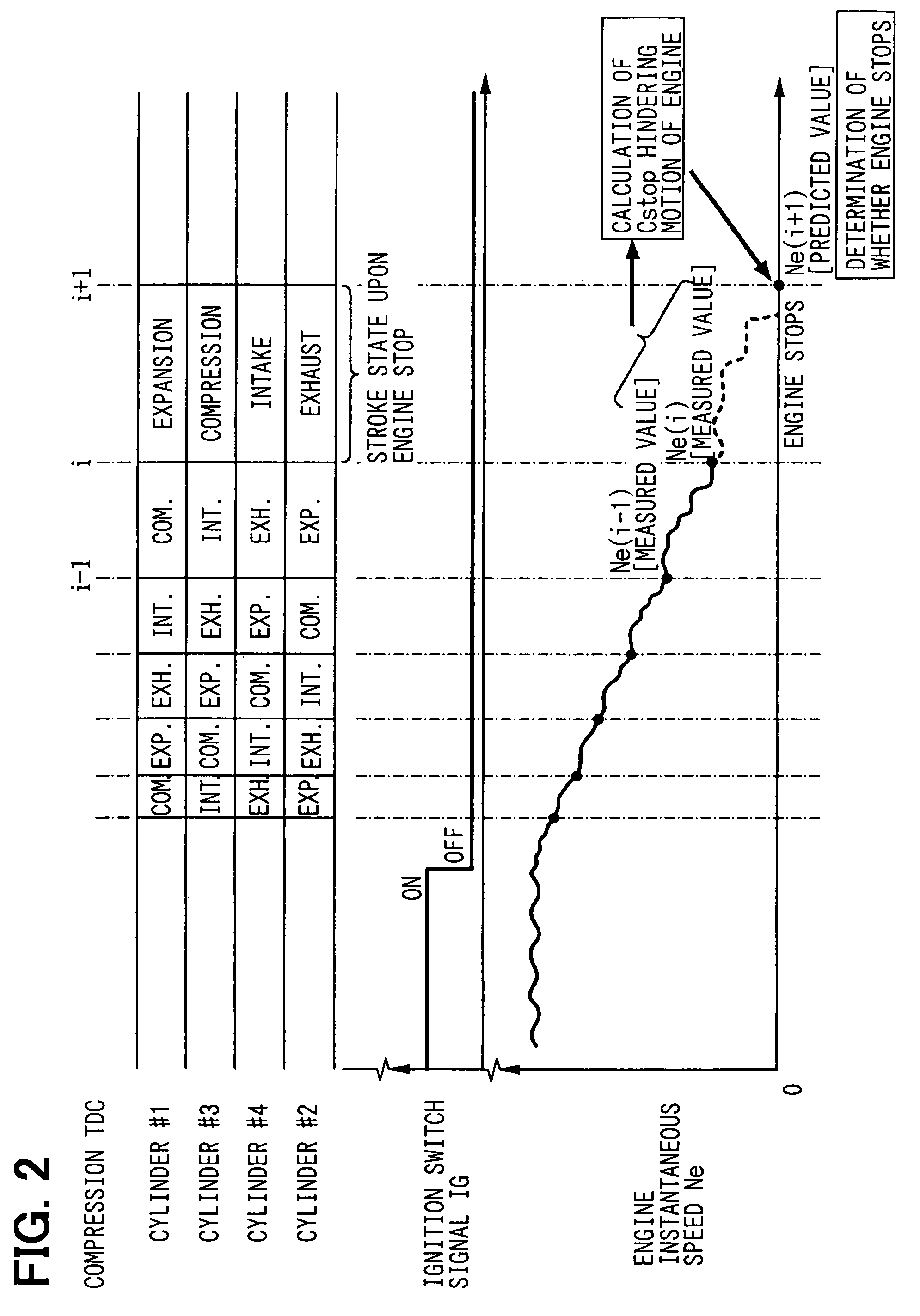Engine starting and stopping control device
a control device and engine technology, applied in the direction of engine starters, electric control, instruments, etc., can solve the problems of affecting the starting speed of the engine, the driver is likely to feel slowness, and the starting sound of the starter becomes a jarring nois
- Summary
- Abstract
- Description
- Claims
- Application Information
AI Technical Summary
Benefits of technology
Problems solved by technology
Method used
Image
Examples
Embodiment Construction
[0031]Explained hereinafter is one embodiment of the present invention, wherein the best mode for carrying out the present invention is embodied by an intake port injection type four-cylinder engine.
[0032]Firstly, an entire configuration of an engine control system will be explained with reference to FIG. 1. A throttle valve 14 is mounted to an intake pipe 13 connected to an intake port 12 of an engine 11. An opening of this throttle valve 14 (throttle opening) TA is detected by a throttle opening sensor 15. A bypass path 16 is mounted to the intake pipe 13 for bypassing the throttle valve 14. An idle speed control valve (hereinafter referred to as “ISC valve”) 17 is mounted to this bypass path 16. An intake manifold pressure sensor 18 for detecting an intake manifold pressure PM is mounted at the downstream side of the throttle valve 14 and a fuel injection valve 19 is attached in the vicinity of the intake port 12 of each cylinder.
[0033]A catalyst 22 for purifying exhaust gas is m...
PUM
 Login to View More
Login to View More Abstract
Description
Claims
Application Information
 Login to View More
Login to View More - R&D
- Intellectual Property
- Life Sciences
- Materials
- Tech Scout
- Unparalleled Data Quality
- Higher Quality Content
- 60% Fewer Hallucinations
Browse by: Latest US Patents, China's latest patents, Technical Efficacy Thesaurus, Application Domain, Technology Topic, Popular Technical Reports.
© 2025 PatSnap. All rights reserved.Legal|Privacy policy|Modern Slavery Act Transparency Statement|Sitemap|About US| Contact US: help@patsnap.com



